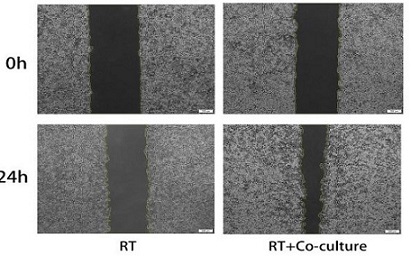Nuclear factor erythroid 2-related factor 2 promotes radioresistance by regulating glutamate-cysteine ligase modifier subunit and its unique immunoinvasive pattern
DOI:
https://doi.org/10.17305/bb.2024.10184Keywords:
Nuclear factor erythroid 2-related factor 2 (NRF2), glutamate-cysteine ligase modifier subunit (GCLM), radioresistance, ferroptosis, macrophage M2Abstract
The enzyme glutamate-cysteine ligase modifier subunit (GCLM) serves as the initial rate-limiting factor in glutathione (GSH) synthesis. GSH is the preferred substrate for glutathione peroxidase 4 (GPX4), directly impacting its activity and stability. This study aims to elucidate the expression of GCLM and its correlation with the nuclear factor erythroid 2-related factor 2 (NFE2L2), commonly referred to as NRF2, in esophageal squamous cell carcinoma (ESCC) and further investigate the potential signaling axis of radiotherapy resistance caused by NRF2-mediated regulation of ferroptosis in ESCC. The expression of NRF2, GCLM, and GPX4 in ESCC was analyzed by bioinformatics, and their relationship with ferroptosis was verified through cell function experiments. Their role in radioresistance was then investigated through multiple validation steps. Bioinformatics analysis was employed to determine the immune infiltration pattern of NRF2 in ESCC. Furthermore, the effect of NRF2-mediated massive macrophage M2 infiltration on radiotherapy and ferroptosis was validated through in vivo experiments. In vitro assays demonstrated that overactivated NRF2 promotes radioresistance by directly binding to the promoter region of GCLM. The Tumor Immune Estimation Resource (TIMER) and quanTIseq analyses revealed NRF2 enrichment in M2 macrophages with a positive correlation. Co-culturing KYSE450 cells with M2 macrophages demonstrated that a significant infiltration of macrophages M2 can render ESCC cells resistant to radiotherapy but restore their sensitivity to ferroptosis in the process. Our study elucidates a link between the NRF2-GCLM-GSH-GPX4 signaling axis in ESCC, highlighting its potential as a therapeutic target for antagonistic biomarkers of resistance in the future. Additionally, it provides a novel treatment avenue for ESCC metastasis and radioresistance.
Citations
Downloads

Downloads
Published
Issue
Section
Categories
License
Copyright (c) 2024 Zhaoyuan Xue, Yiliyaer Nuerrula, Yilidana Sitiwaerdi, Mayinur Eli

This work is licensed under a Creative Commons Attribution 4.0 International License.
How to Cite
Accepted 2024-02-04
Published 2024-05-02









